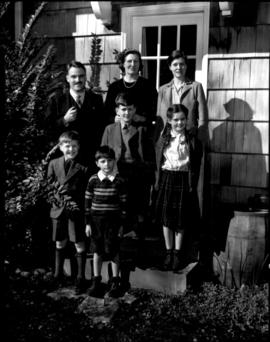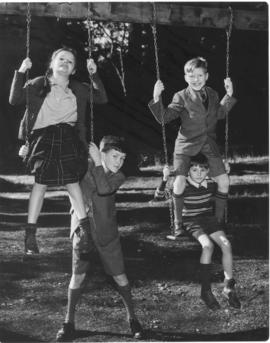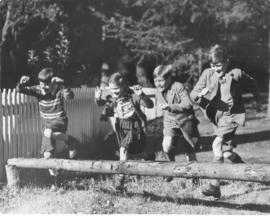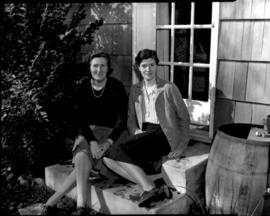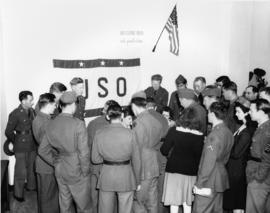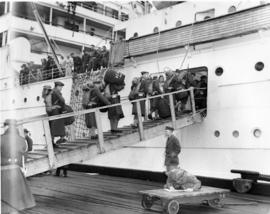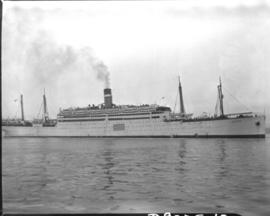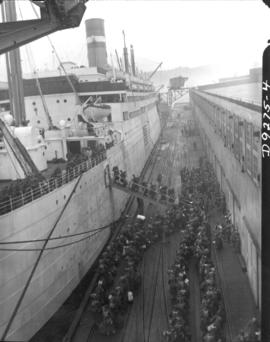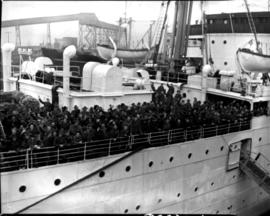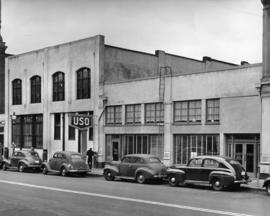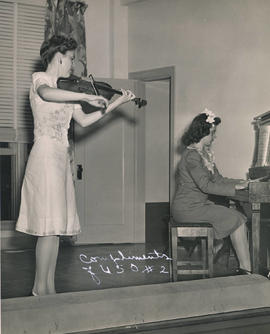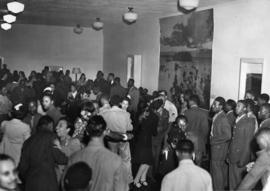- Item
- 1940-10-26
Part of Richards Studio Photographs
Mr. and Mrs. George Hellyer open their home in Interlaaken to their English friend's children for the duration of the European War. Pictured standing in the rear are Mr. and Mrs. George Hellyer flanking their friend Mrs. Robert Schlee. The children are, center row left to right, Nicholas Schlee and Marian Hellyer; bottom row left to right, Sandy Schlee and Harold Hellyer. Hundreds of English children had been sent to the U.S. to escape the German bombing of their own country. These boys are the first to come to Tacoma. They are also some of the last to leave England as the English government has forbidden future sailings of English children. Mrs. Schlee will return home to England. (T. Times 10/26/1940, pg. 1)
World War, 1939-1945--Children--Tacoma; Hellyer, George--Family; Schlee, Robert--Family;
